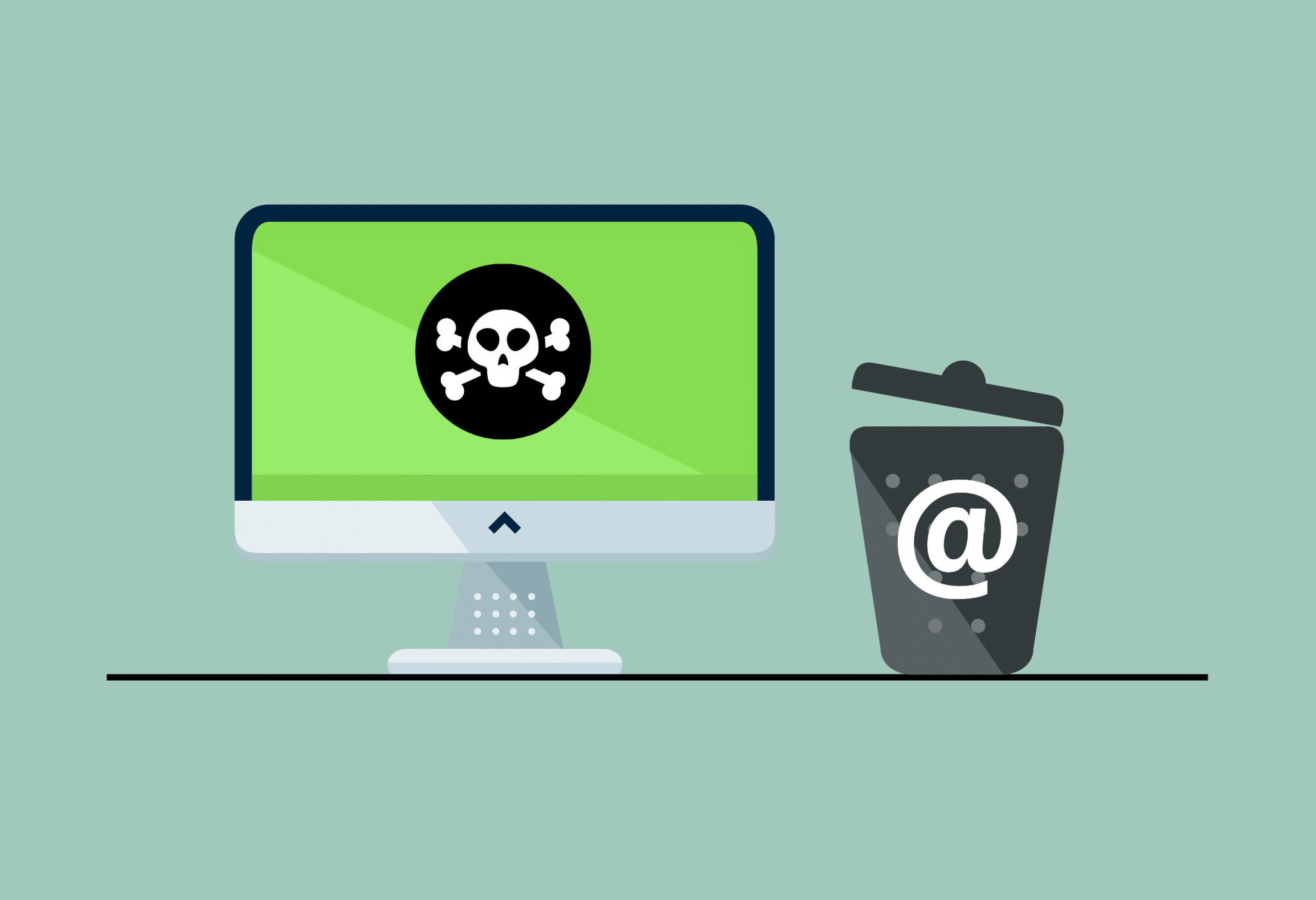Cold emailing isn’t easy. But if it were, everyone would be doing it. So let’s rethink your email prospecting strategy to succeed where others have failed. All it takes is some time, effort, and a little ninja-ing.
How’s your inbox looking these days? If you’re like us, you’ve probably got a lot of unread emails in there.
There are Nigerian princes still waiting for us to wire them money. There are chain letters from our aunt that will never get forwarded to three other people. There are we-only-wanted-15%-off-but-are-too-lazy-to-unsubscribe newsletters. So many notifications from the FBI that our PC is infected even though we use a Mac. Hey, there’s Jack from accounting requesting expense reports. Probably should have opened that one…
But hey, who has the time? Not your customers, that’s for sure.
Given the hundreds of emails your customers wade through on the daily, it’s no surprise your email outreach is going left unread.
The average Joe receives over 120 emails per day. And only 24% of cold emails get opened.
That’s right; most of your emails are NOT getting read.
Which leaves even most self-assured of digital marketers wondering…
Does Cold Email Prospecting Work?
YES!!!
There are so many compelling stats supporting cold email prospecting; it’d make your head spin.
Not only do more people use email than any other marketing channel, but email has the highest customer acquisition rate.
That’s probably because, as Hubspot found, consumers prefer to get messages via email over any other marketing channel, including social media, TV commercials, direct mail, and roadside sign spinners.

Guess what else: Two-thirds of all customers who make a purchase do so as the direct result of email marketing messages.
Sure, these stats could be applied to all email marketing. But even if a small fraction of these results holds true for cold email prospecting, then it is still one of the best, budget-friendly ways to reach your potential customers.
Though you might be asking yourself, if that’s all true, why is your cold email outreach not performing as well as you’d like?
Three words.
Spam, spam, and SPAM!

Cold Email Prospecting and You: Avoid Looking Spammy
Cold email prospecting is not spam.
But, if you’re not careful, your outreach could smell really spammy to your customers.
That’s because pretty much all spam are cold emails. And, by association, that reputation very often gets slapped onto perfectly good, non-spammy cold outreach.
But there is a huge difference between annoying spam emails indiscriminately targeting everyone and one-to-one personalized cold emails targeting a specific audience.
Malwarebytes perhaps says it best when they define spam as:
Spam is any kind of unwanted, unsolicited digital communication that gets sent out in bulk.
There are two key components in that definition. They are:
- Unwanted
- Bulk
Cold email prospecting may be unsolicited, but it is not inherently unwanted or sent out blindly in bulk. In fact, when done right, a cold email can be just as well-received as any other email in an inbox. Just don’t fall victim to these two components. If your cold email prospecting is not working, more than likely, you have.
This is a problem for a few reasons.
Not only will people find your communications annoying, which creates a negative brand perception, but your business could also get blacklisted.

But don’t worry.
We’re going to show how to avoid looking spammy, and in turn, improve your cold email outreach ROI.
When all is said and done, the next time you look in the mirror, a cold email ninja will be looking back. Steely-eyed and fully authenticated. One that can stealthily enter any inbox and engage any prospect.
Don’t Make These Beginner Cold Email Prospecting Mistakes
At the bare minimum, avoid the following:
- Misrepresenting who you are (e.g., a Nigerian prince)
- Misleading subject lines (e.g. “Zuckerburg wants to give you money!”)
- Deceitful offers (e.g., “Reply to get $1,000. Free. No Catch. Honest.”)
- Not providing an opt-out option
- Ignoring opt-out requests
- Not vetting your contact lists
Most of those are pretty self-explanatory. (If you need help with that last one, let us know.)
Though more than likely, you already know all that.
You might also know that even if you follow these cold email prospecting best practices, sometimes your messages can still get flagged as spam.
So let’s take a look at some common, but often overlooked, reasons why cold email prospecting does not work, and how to fix each.
Cold Email Fail #1: Not Properly Configuring Your Domain
Above all else, you want your emails to avoid being classified as unwanted and bulky. This means two things:
- You want service providers to want you.
- You want your customers to want you.
As in….

Embrace your inner Cheap Trick. That’s the secret to successful cold email prospecting. (And rocking.)
Email Service Providers (ESPs), like Gmail, Outlook, and Yahoo Mail, are the gatekeepers — the bouncers if you will — to your customer’s inbox. So you better make them happy. If they don’t like the looks of you, then your emails are never going to get through.
A good place to start is being able to talk the talk. So we recommend being familiar with the following terms if you’re not already:
- Domain – What follows after the @ symbol in an email address.
- Internet Protocol (IP) Address – A series of numbers assigned to a device that is connected to the Internet. Think of it as the home address for your computer, printer, or other wired devices, as well as a website.
- Domain Name System (DNS) – Translates human-readable domains (like titangrowth.com) into IP addresses (104.27.24.116) that web browsers use to pull up a website. Think of DNS like your phone’s GPS. You put it in the name of a location and your phone pulls up the numerical GPS coordinates to show where it is on a map.
- Mail Server – The digital equivalent of a mailman. When you send an email, it has to be transferred to a mail server first, kind of like a post office. Every email that is sent passes through a series of mail servers on its way to its intended recipient.
All of these play a role in whether or not ESPs trust your email lists. If they’re not trusted, then your emails will, at best, land in a spam folder and, at worst, get you blacklisted.
So your mission, should you choose to accept it, is to authenticate your domain for emailing.
Cold Email Fix #1: Email Authentication
Email authentication (or domain authentication) provides a way to verify that an email comes from who it claims, using DNS records.
DNS records prove your domain can be trusted, verify the credibility of the sender (aka you), and ensure your cold emails end up where you want them (aka in your customer’s inbox).
There are several DNS records you should set up to authenticate your domain. These include:
- A Record
- MX Record
- Reverse DNS Record
- DKIM
- SPF
- DMARC
Here’s what each of those does:
A Record
The Address (A) Record links a domain name to an IP Address number. A Records are the most basic type of DNS record, and are required to send and receive mail properly. Most likely, if you’re using a branded email address, your A Records are already set up.
MX Record
MX Record is short for “mail exchange.” These records specify the mail server responsible for accepting emails and show where emails sent to your domain should be routed, by referencing the A Record. Although MX Records are not required to send emails, having one is a standard best practice to ensure deliverability.
Reverse DNS Record (rDNS)
The Reverse DNS Record maps IP addresses back into host names, reversing the normal “forward” DNS process. Also known as a PTR Record, instead of writing the domain and getting to the IP Address, you start with the IP address to reach the domain name. This is probably the most important DNS record for email authentication. Without a valid reverse DNS record, many ESPs will block your email.
DomainKey Identified Mail (DKIM)
DKIM provides certainty that a message from a domain is indeed from that domain by attaching an encrypted digital signature identifier to your messages. For many ESPs, like Gmail, if your DKIM signature fails, your emails have a high probability of being routed to a spam folder.
Sender Policy Framework (SPF)
The SPF record prevents spammers from sending emails that appear to come from your domain (called “spoofing”). In other words, like DKIM, it verifies that you are who you say you are. Many ESPs also require a valid SPF.
Domain Message Authentication, Reporting and Conformance (DMARC)
DMARC is an extra layer of domain credibility that indicates your emails are, in fact, protected by SPF and DKIM. It helps protect your brand further against phishing and spoofing attacks. In order to implement DMARC, you must first have SPF and DKIM setup.
Implementing DKIM or SPF records incorrectly can cause major issues. We recommend contacting your email hosting company to assist with setting up email authentication. You can also find authentication tutorials for your specific ESP online (for example, here’s the email authentication resource Google provides). Or, if you’re looking for personalized assistance, reach out to us anytime.
Once you have your DNS records set up, you should then warm up your domain’s email, which basically means using it consistently at a lower email volume to establish legitimacy. To effectively warm up a domain, you’ll want to send smaller batches of emails over the first few months. Also, use the domain for business and personal use as well. The more replies you can elicit can help improve your domain trust and sender score.
That covers the technical side of cold email outreach. Next up, let’s take a look at the content side.
Cold Email Fail #2: Unwanted Messaging
Now that you’ve gotten service providers to want you, you need to get prospects to want you.
We get it; cold email prospecting is not the most fun thing to do.
No one wants to be “that guy.”
You know, the one that calls when you’re just sitting down to dinner. Who knocks on the door unexpectedly to sell you a vacuum (if this were 1950). Who emails you acting like you’re best friends to upsell a premium membership.

No one responds well to strangers asking them to do things they didn’t ask for.
Especially when it happens all the time.
Which is the whole reason why Google created tabbed inboxes in Gmail.

That’s Google’s response to email fatigue. They segmented “less important” emails out and turned the Primary inbox into the “one tab for the mail you really, really want.” Their words. Not ours.
Why all the division?
Because when performing cold email prospecting, businesses often just whip together some generic message and blast it out in bulk to the masses. In their eyes, this saves time and money. Also, they likely have little faith cold outreach will provide a worthwhile return.
As a result, stereotypical cold emails can come off as being:
- Interruptive
- Annoying
- Irrelevant
- An invasion of privacy
If you want your cold email prospecting to work, don’t be any of those things.
Instead, be the complete opposite. Don’t be “that guy” your customers despise. Be the guy who’s a welcomed surprise.

How does one become so desirable, you ask?
Aside from turning into the Rock, some good ole fashioned writing should do the trick.
Cold Email Fix #2: Write Engaging Cold Emails
Email writing might seem like a beast of a topic, but really it’s quite simple. Any effectively written email (cold, warm, or otherwise) boils down to three essential elements:
- Being personalized
- Being sincere
- Being creative
Personalized, as in your email doesn’t scream mass-produced and is relatable to the individual you’re sending it to. Sincere, as in your emails aren’t deceitful, unhelpful, and all-about-you. Creative, as in creative.
Beyond that, when crafting engaging cold emails, be sure they are:
- Short
- Clear and concise
- Using proper grammar
- Using industry buzzwords
- Not stuffed with too many links (one CTA at most)
The most personalized way to achieve all that is to research each contact and individually write out each cold email you send to them. But that might not be practical, especially if you have an extensive contact list.
If the latter is the case, go all-in on merge tags (or merge mail).
Merge tags or personalization tokens are ESP-specific code that allows you to insert unique recipient data into your mass mailings. Think beyond merely using “Hi NAME.” Get creative. You can create custom merge fields for pretty much anything on pretty much every ESP.
Of course, there’s one other crucial component to making sure your prospects want your messaging: Making sure you’re sending your emails to the right prospects.
Cold Email Fail #3: Targeting the Wrong Audience
Who we reach out to can make or break a campaign.

Which is why it’s so frustrating to see brands that take a shortcut with their cold contact email lists. Nine times out of ten, poor targeting is why cold email prospecting is not working.
The two biggest cold email prospecting mistakes we commonly see are:
- Using unvetted purchased email lists.
- Emailing contacts that don’t match a brand’s Ideal Customer Profile (ICP).
Most doing email marketing wrong adhere to the philosophy that the more people you contact, the greater the chance someone will respond. That’s why so many blindly purchase email lists and then push out impersonal messaging en masse to non-vetted addresses in hopes that something will stick.
It’s the throw-spaghetti-against-the-wall strategy… but it mostly just ends up on the floor.

But by sending relatable, personalized messages to pre-vetted sales qualified leads; you’ll find far more success.
That’s more like throwing darts (or ninja stars).

Train hard enough, and you’ll hit the bullseye every time.
Cold Email Fix #3: Target the Right Audience
Unlike warm lead contact lists, who pretty much just fall in your lap if you promise to give them something for free, you have to work a little harder when building a cold email list.
More specifically, you have to be more discerning about who you target.
Ideally, the people you target will match your Ideal Customer Profiles.
An Ideal Customer Profile (ICP) defines your most valuable customers. They are the ones that are a perfect fit for your solution and would benefit most from what you offer. Your cold contact lists should exclusively target your brand’s ICP.
If it doesn’t, then it’s not worth doing any cold email prospecting at all.
Target the right audience, and not only will you vastly improve your chances that recipients will want your messages, but you will also ensure you’re not overdoing it.
Which brings us to…
Cold Email Fail #4: Doing Too Much Outreach
Remember the two components that make spam emails spammy? They were:
- Unwanted
- Bulk
We just looked at three ways to ensure your emails don’t fall prey to the first component, unwanted emails. Now let’s tackle the second – bulk emails.

If you’re using an ESP, they’re built with a server capacity to send large numbers of emails at once.
But that doesn’t mean you should test the limits.
These providers keep watch over accounts that put undue stress on the system. If a lot of outgoing emails aren’t landing (i.e., bounce a lot), then it raises a big fat spammy red flag. The more volume you put out, the more you increase your potential bounce rate.
So at this point — having a properly setup domain, some very creatively written messages, and having built your cold contact dream team — you need to put the odds evermore in your favor of making contact.
But you don’t do that by inundating the system.
You do it by picking your moves wisely.
Cold Email Fix #4: Choose Quality Over Quantity
Cold emailing lives and dies on finding that sweet spot of outreach.
Not too much.
Not too little.
You should strive to send just the right amount of emails to get an acceptable reply rate, but not inundate the system of your ESP. Where your optimal engagement rate meets your ESPs volume threshold is the sweet spot of outreach.
If you followed the third fix above, your list should already inherently be built around the highest quality leads possible. But just to be safe, and ensure you don’t use up your sending capacity reaching out to un-engaged prospects or non-existent addresses, run the following test.
- Send a test batch of emails to a smaller sample of your list.
- If those emails provide positive results (e.g., high open rates and replies), send out the rest. If your list is really large, send it out in batches, monitoring results closely.
- If a majority of emails bounce (i.e., can’t be delivered), the list is not meeting quality standards and you need to refine further or reassess your methods for list vetting.
- If a majority of emails get delivered, but your open rates and replies are low, then you need to reassess your subject line and email messaging.
Do that, and you’ll end up with one quality cold email prospecting campaign.
Conclusion: Ninja Your Cold Email Outreach
Avoiding these cold email fails can prevent being flagged as spam, dodge spam filters, improve open rates, generate click-throughs, and get off blacklists.
The average business will spend most of their time, effort, and budget on crafting fancy-looking warm marketing emails, when they would be wise to put just as much, if not more, into cold email outreach.
Cold email outreach is just as important as warm emailing because it has the potential to provide higher ROIs.
Believe it or not, there’s less of an ongoing cost to run cold email prospecting campaigns. Warm emailing depends on nurturing leads from the top of the sales funnel to the bottom, while cold emailing, when done right, cuts to the chase by going directly after your pre-vetted, sales qualified leads.
So if your outreach is not working, don’t give up.
There is no reason why you can’t reach your prospects with the skill of a disarmingly friendly ninja, one cold email at a time.



